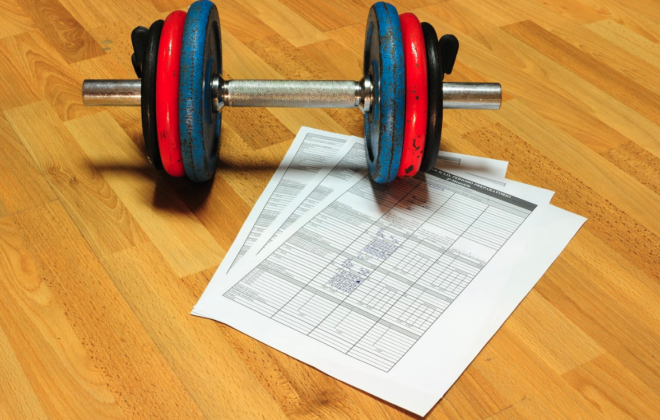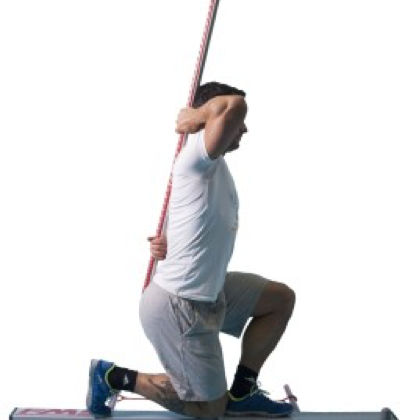How to construct cardio training?
Many people are not fond of cardio and they often avoid it. Yet, cardio should be a component of every health-oriented program. Cardio training gives us a whole range of health benefits:
- Increases calorie consumption
- Increases the consumption of oxygen
- mobilizes fatty acids
Most people who do cardio training randomly determine the load and duration of training. Often because of not understanding the basic principles of cardio training. In this blog we aim to give you a few guidelines that will ease your planning and programming of cardio training. For start we will explain the basic components of cardio training: warm-up, load period and cool-down.
Warm-up
Warm-up is the easiest part of training and implies 5-10 minutes of low-moderate intensity exercise for most people. The intensity remains constant or slowly increases according to the values that await us in the conditioning phase. Generally, the more intense the conditioning phase the longer the warm-up. Goal of warm-up phase are improving range of motion and possibly reducing risk of injury. A dynamic, endurance exercise warm-up is superior to static flexibility exercises with the purpose of enhancing performance, especially in long endurance activities or resistance exercise with many repetitions. Static stretching is usually not recommended because some research showed reduction of the ability to generate force immediately after stretching. However, it is assumed that this reduction is only acute and that the abilities return very quickly to their initial values. Thus, a few series of dynamic stretching are thought to be a better option.
Conditioning
Goal of load phase is to generate adaptational changes through rising of load rises to the highest values. The load will vary from person to person in accordance with its current state. How to determine the load we will explain below.
Cool-down
The cool-down follows the conditioning. Its intensity should be closer to intensity in the conditioning than warm-up. The aim of this phase is primarily to allow reduction of metabolic products in the muscles.
Determination of intensity
The intensity is the most important part of cardio training and the part which people usually randomly determine. There are several ways of determining the load and before we introduce them we will explain zones of cardio training.
Depending on author cardiorespiratory training consists of three to six zones with two ventilation thresholds. We will briefly explain 3 main zones intersected by two ventilatory tresholds.
| 1st Zone | 1st Ventilatory
treshold |
2nd Zone | 2st Ventilatory
treshold |
3rd Zone |
Zone 1 – Training in zone one is training in which energy is derived through aerobic systems, i.e. with the presence of oxygen. Such exercise can be maintained for a long period and if used as a warm-up should last 5-10 minutes.
Zone 2 – The person switches to zone two when the intensity, respiration and oxygen consumption are substantially increased. Zone two is located between the first and second ventilatory threshold. In this phase, increase in ventilation is no longer linear. According to ACSM 2018 recommendations, training in conditioning phase of training, which is made of zones two, three and 2nd ventilatory threshold, should last at least 20-60 minutes in one session.
Zone 3 – zone in which the intensity is largest. It is the most difficult exercise zone. Zone 3 begins after second ventilatory threshold and increase in blood lactate prevents prolonged sustaining of work. Training in zone 3 should represent 10% of the total time. In specific lactate tolerance or speed trainings this percentage can increase substantially.
Now that we know more about zones, we can determine the load for training in one of them.
The most common methods used for determining zones are:
- % of heart rate reserve (HRR)
- Subjective feeling of load
- % of the maximal oxygen consumption reserve (VO2R)
- Lactate Measurement
- Talk test
Some of these methods require measuring equipment as well as knowledge of tests and protocols. One very easy method to implement is determining the zones with the help of a talk test.
Talk test
The core of the Talk test is the following: if a person can have a normal conversation during the activity or if is able to make a full sentence without stopping, it is in zone 1 or beginning of zone 2. If a person has difficulties and takes short pause when saying the sentence, the person is above the first ventilation threshold and in zone 2 or higher. If a person cannot tell a sentence at all or find it very hard without taking big pauses, the person is around or above the second ventilatory threshold in zone 3.
| Rate of perceived exertion | Description |
| 0 | Rest |
| 1 | Very light |
| 2 | Light |
| 3 | Moderate |
| 4 | Somewhat severe |
| 5 | Severe |
| 6 | – |
| 7 | Very severe |
| 8 | – |
| 9 | Very, very severe |
| 10 | maximum |
This test can be very easy to implement with the client because the coach stands next to the client, controls the intensity on ergometer and with the help of the talk test determines intensity zones. It is important to emphasize that the sentence must be pre-arranged to easily monitor the intensity.
| Intensity | Zone 1 | Zone 2 | Zone 3 |
| Talk test | Normal speaking | Hard to speak | Not able to speak |
Subjective load estimation
Subjective load estimation is another method that can be used for monitoring of the intensity. There are several rank scales for rating perceived exertion/load. The first scale is Borg’s scale and it ranges 6-20, where 6 is the lowest load and 20 the largest. This scale is connected to the heart rate. Six indicates 60 beats per minute and it is the heart rate at rest. Twenty represents 200 heartbeats and it is approximately the highest heart rate. Some researchers modified original Borg scale from 6-20 to 1-10 due to simpler use. If you, as an athlete, wish to know your current load printout a small table and look in the table during the test for a zone rating.
| Intensity | Zone 1 | Zone 2 | Zone 3 |
| Rate of perceived exertion | 3-4 (moderate) | 5-6 (hard) | 7-10 (very hard) |
Conclusion
The advantages of both methods are simplicity of teaching the clients and not requiring expensive equipment. Moreover, these methods also show a great correlation with more advanced methods like spiroergometry. Spiroergometry gives us metabolic indicators and measure of maximal oxygen consumption (VO2max). With these two methods you can easily monitor your intensity during cardio training and thus achieve greater benefits of training.





